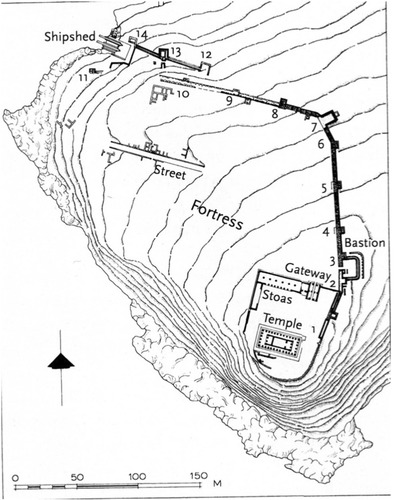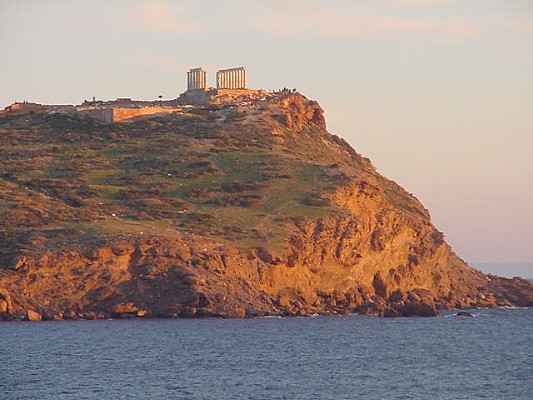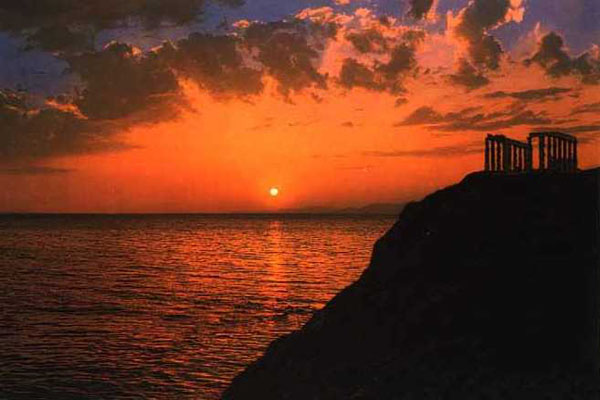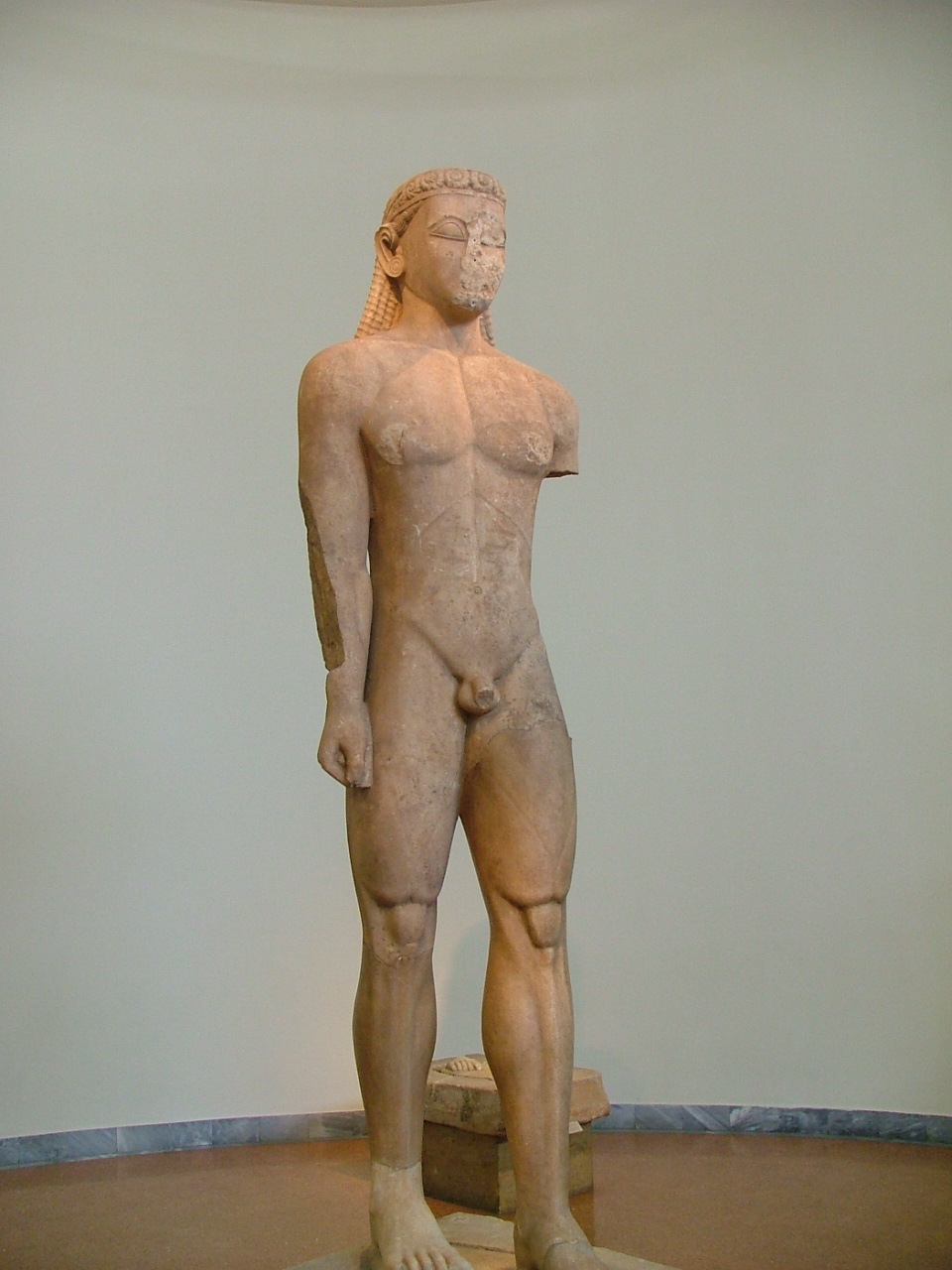Temple of Poseidon in Sounion
Archaeological Development
The temple was built shortly after the middle of the 5th century BC, however, the area was already a site of religious activities since at least 700 BC. It isn't the first temple to occupy the site and isn't unique in the area. The temple of Athena, for example, is very close. The first temple of Poseidon was made out of porous stone, like most temples during the archaic period. however, we do not know the exact date of construction. It was destroyed by the Persians around 480 BC.
The remnants of the first limestone temple (fragments of the columns, steps, etc.) can be found under the new temple.
The second temple was built between 444 BC and 440 BC. It was probably part of Pericles' building program. It is built out of coarse-grained marble from Agrileza, a nearby quarry. The temple shares many similarities with the temple of Nemesis in Rhamnous and the temple of Ares and Hephaistos in Athens which means that they were probably designed by the same architect.
Distinctive features:
- thin columns
- heavy super-structure
- Ionic moldings and frieze
- Relationship between the porches and lateral colonnade.
Gods/Heroes
- Poseidon.
There has been confusion since the temple was first identified as the temple of Athena. However, inscriptions were found in the sanctuary, one of them referring directly to the temple of Poseidon which cut short debates about the identification of the temple. Furthermore, Aristophanes refers to the temple (Birds 559) and Euripides refers to it in his satyr-pay "the Cyclops".
Ritual Activity
Sacrifice-
A ramp leading through the central door is proof that animals were lead in the sanctuary for sacrifices.
Dedications-
Fragments of Kouroi were found but most dedications were probably destroyed/ stolen by the Persians during the destruction of the first temple.
There is one exception: a large kouros has been found (probably 7 BC), buried close to the temple, probably hidden during the Persian invasion. His left leg is slightly in front of his right leg and his arms are close to the sides. He has long hair, tied with a ribbon, falling on his back.
Most destroyed dedications could not simply be thrown away due to their sacred value. Fragments of the destroyed kouroi were therefore found in a pit close to the temple in order to make space for new dedications.
Festivals-
Every four years, a festival was held in Sounion. Though not much information is available, this festival probably took place during the 5th century BC, with officials travelling in a ship, specially commandeered for the occasion
Rules and Regulations
Only few fragments have been found, none of the inscriptions relate to rules and regulations.
Historical Significance
the site has been occupied for centuries before the construction of the temple. The earliest tomb has been dated from the 3 millenium BC. Though this is the earliest trace of civilisation, the first source referring to Sounion as a place of worship is Homer, in the Odyssey "But when we came to the sanctuary of Sounion.." (Odys. III, 278). Later developments led to the construction of the first temple of Poseidon, then the second (see archeological development).
Who used the site, and where did they come from?
Other than being a place of worship for citizens all over Ancient Greece, the temple was particularly visited by sailors, either before departure - especially because the sea close to the promontary of Sounion was known to be stormy - or after their journey, thanking Poseidon for his protection by means of dedications and/or sacrifices.
Select Site Bibliography
- Stillwell, R., MacDonald, W. and Holland McAllister, M. (1976). The Princeton Encyclopedia of classical sites. Princeton, New Jersey: Princeton University Press, p.854.
- Tataki, A. (1978). Sounion. Athens: Ekdotike Athenon.
- Gregory R. Crane, Perseus digital library, http://www.perseus.tufts.edu/hopper/artifact?name=Sounion&object=site
- Frank van Mierlo, Ancient history encyclopedia, 2012, http://www.ancient.eu/image/250/
- Homer., and Lattimore, R. (1967). The Odyssey of Homer. New York: Harper & Row.
- Laura A. Rogers, Sounion history (Dartmouth edu), 2001, http://www.dartmouth.edu/~cpano/sounion/details/history.html
Location
The temple of Poseidon is located on the promontory of Sounion which is the southernmost part of Attica. This is an ideal location for the the worship of the god of the sea.
Site Plan





